Suez Inscription of Darius I Hystapses, Cairo Museum: by James Hoffmeier, Egyptologist & OT Scholar
The Suez Inscription of the Medo-Persian King Darius the Great (Darius I Hystaspes, 521-486 B. C.) of the Achaemenid Empire is found in the Cairo Museum in Cairo, Egypt. The inscription is commented on by leading Egyptologist, Biblical and Old Testament scholar, and evangelical Christian Dr. James Hoffmeier. The canal was built through the Wadi Tumilat, connecting the easternmost or Bubastite branch of the Nile with Lake Timsah, which was connected to the Red Sea by natural waterways.
Darius the Great is frequently mentioned in the Bible (Ezra 4:5, 24; 5:5–7; 6:1, 12–15; Haggai 1:1, 15; 2:10; Zechariah 1:1, 7; 7:1). He is the Persian ruler who, in the time of Ezra the priest, confirmed the decree of the Persian king Cyrus for the rebuilding of the Temple in Jerusalem:
Then Darius the king made a decree, and search was made in the house of the rolls ... in Babylon. And there was found at Achmetha, in the palace that is in the province of the Medes, a roll ... thus written: In the first year of Cyrus the king the same Cyrus the king made a decree concerning the house of God at Jerusalem, Let the house be builded, the place where they offered sacrifices ... And also let the golden and silver vessels of the house of God, which Nebuchadnezzar took forth out of the temple which is at Jerusalem, and brought unto Babylon, be restored, and brought again unto the temple which is at Jerusalem[.] . ... [L]et the ... Jews build this house of God in his place. Moreover I make a decree what ye shall do to the elders of these Jews for the building of this house of God: that of the king’s goods, even of the tribute beyond the river, forthwith expenses be given unto these men, that they be not hindered. And that which they have need of, both young bullocks, and rams, and lambs, for the burnt offerings of the God of heaven, wheat, salt, wine, and oil, according to the appointment of the priests which are at Jerusalem, let it be given them day by day without fail: That they may offer sacrifices of sweet savours unto the God of heaven, and pray for the life of the king, and of his sons. Also I have made a decree, that whosoever shall alter this word, let timber be pulled down from his house, and being set up, let him be hanged thereon; and let his house be made a dunghill for this. And the God that hath caused his name to dwell there destroy all kings and people, that shall put to their hand to alter and to destroy this house of God which is at Jerusalem. I Darius have made a decree; let it be done with speed. (Ezra 6:1-12)
The Suez inscription of Darius reads:
“I am a Persian; with Persia I seized Egypt. I commanded to dig this canal from the river named the Nile [Pirāva], which flows through Egypt, to this sea which comes from Persia. Then this canal was dug, according as I commanded. And I said, ‛Come ye from the Nile through this canal to Persia.’” (“Persians,” ed. James Orr et al., The International Standard Bible Encyclopaedia [Chicago: Howard-Severance, 1915], 2336.)
The Greek historian Herodotus states that Pharaoh Necho / Neco started to build the 115 mile long canal to join the Mediterranean to the Gulf of Suez, while Darius I of Persia completed it. Herodotus writes (Histories 2:158-159):
Psammetichus had a son Necos, who became king of Egypt. It was he who began the making of the canal into the Red Sea, which was finished by Darius the Persian. This is four days’ voyage in length, and it was dug wide enough for two triremes to move in it rowed abreast. It is fed by the Nile, and is carried from a little above Bubastis by the Arabian town of Patumus; it issues into the Red Sea. The beginning of the digging was in the part of the Egyptian plain which is nearest to Arabia; the mountains that extend to Memphis (in which mountains are the stone quarries) come close to this plain; the canal is led along the lower slope of these mountains in a long reach from west to east; passing then into a ravine it bears southward out of the hill country towards the Arabian Gulf. Now the shortest and most direct passage from the northern to the southern or Red Sea is from the Casian promontory, which is the boundary between Egypt and Syria, to the Arabian Gulf, and this is a distance of one thousand furlongs, neither more nor less; this is the most direct way, but the canal is by much longer, inasmuch as it is more crooked. In Necos’ reign a hundred and twenty thousand Egyptians perished in the digging of it. During the course of excavations, Necos ceased from the work, being stayed by a prophetic utterance that he was toiling beforehand for the barbarian. The Egyptians call all men of other languages barbarians. Necos then ceased from making the canal and engaged rather in warlike preparation[.]
The king Darius mentioned in the Bible was a real historical person. The Darius inscription is one of thousands of archaeological evidences validating the Bible is God’s Word.
-
 7:05
7:05
Time to Reveal The Real Giants Age of Disclosure - Backup Channel
1 year agoEgyptian statue was actually alive once - Excerpt from mudfossil university
4121 -
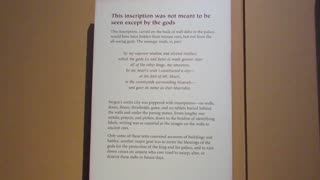 0:39
0:39
Hidden Human Story
7 months agoMesopotamian Inscription
11 -
 0:40
0:40
The Ancient Enigma Files
5 months ago🔺📜 The Unwritten Mystery: No Hieroglyphs on Building the Egyptian Pyramids 🌄
661 -
 12:37
12:37
History
4 months agoRemarkable Archaeological Discoveries Dakoken Sword and Ancient Treasures in Egypt
71 -
 2:14
2:14
Hidden Human Story
7 months agoMore Egyptian Artifacts
11 -
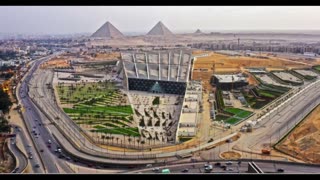 1:55
1:55
Amazing Egypt
1 year agoThe Grand Egyptian Museum-Egypt will amaze the world
12 -
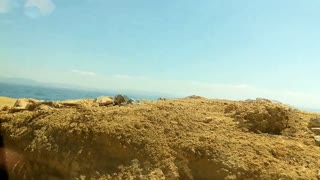 0:48
0:48
dahabegypt
5 years ago $0.01 earnedDahab's Beautiful Water Egypt Wonder
3194 -
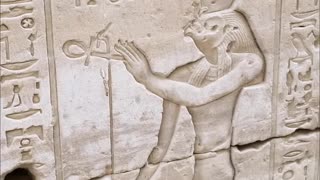 27:39
27:39
Travel
6 months agoEdfu Egypt Temple of Horus, Hieroglyphs Creation Story Holy of Holiest Sacred Boat
30 -
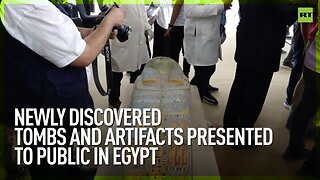 0:55
0:55
RT
11 months agoNewly discovered tombs and artifacts presented to public in Egypt
1.18K6 -
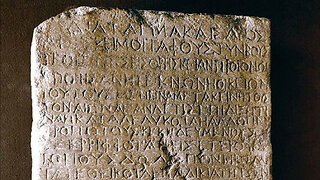 6:27
6:27
ScythianJohn
6 months agoThe Nazareth Inscription Discovery
20